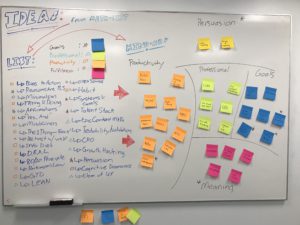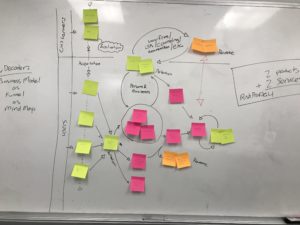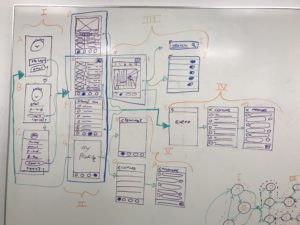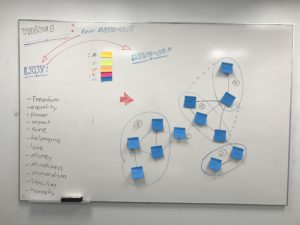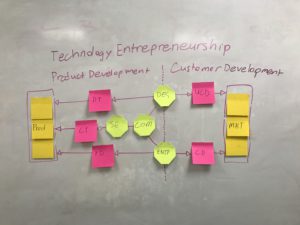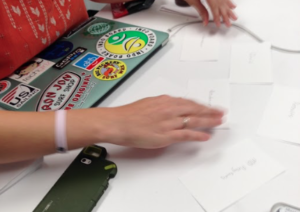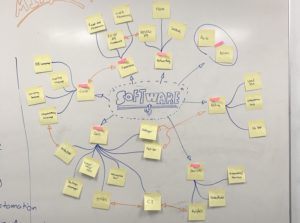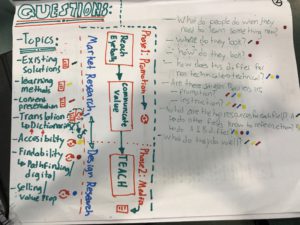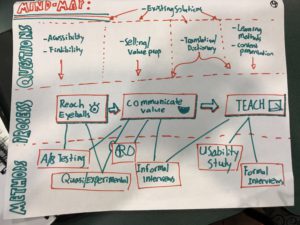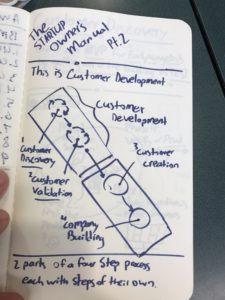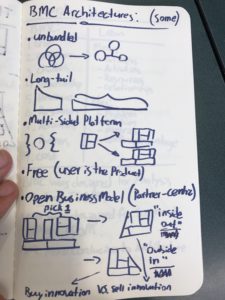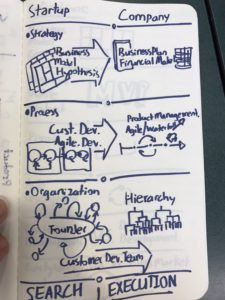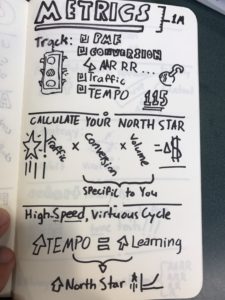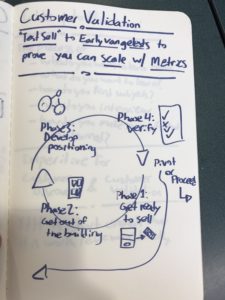Good designers use a combination of creative and analytical skills to come up with innovative solutions.
One of the problems with traditional design training is that it assumes students are given a good background in analytical thinking from the university system, so it focuses on creativity training – oftentimes overcompensating.
Having training as an engineer as well as a designer, has allowed me to not only round out my skill set, but also to make both my analytical and creative skills stronger by using ideas from one in the other – making new ways to discover innovations.
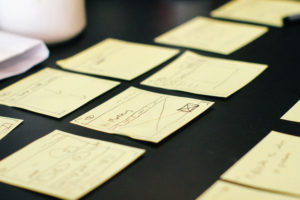
Design
Use creative and analytic skills to brainstorm and organize all of the ideas and possibilities available. Find a question to ask. Design an experiment

Develop
Using rapid prototyping and simple technologies, develop a minimum testable prototype (or MTP) – a prototype that will allow you to run your experiment cheaply and nothing more.

Discover
Get your prototype in front of people, and get ready to ask questions and collect data. Discover the different answers to your experiment.
Engineering as Design
Engineering isn’t just about building. When brainstorming new ideas and solutions, it’s also about organizing and architecting ideas.
Idea generation is used to explore problems, but proper design thinking also involves organizing those ideas into models and discarding irrelevant pieces. This is where the systems thinking that engineers learn is really impactful.
Using abstraction, hierarchy, and process design, coherently modeling your ideas and the differences between them becomes much more clear.
Combining different disciplines like this leads to new methods for innovation, such as mind mapping and clustering ideas in order to get hierarchy from chaos.
Design as Engineering
Application development is not a technical skillset, in the same way that woodworking is not a technical skillset. Both are also a craft.
Much like industrial designers and architects use woodworking to create an test prototypes of their designs. Good UI/UX designers should be able to rapidly prototype their ideas for testing. They don’t need to singlehandedly release the next Snapchat into production, but they should be able to create a Minimum Testable Prototype or MTP.
Since app development is a craft, UI/UX designers should be digital product designers. And they can learn as much or as little as is needed to get the job done. This has led me to deep dive on more technical subjects like progressive web apps (PWAs), micro-services, serverless, dev-ops, and even machine learning.
Discovery: Product Management as Design Research
Human Computer Interaction, User Centered Design, Human Factors, User Experience, Design Research. All these things have a few differences, but at their core they are all the same exact thing: Discovery.
For startups, product management is also discovery. This makes sense because startups are organizations trying to iterate on the UVP of their product as it scales.
This is why anyone trying to do product management at a startup is taking on the role of design researcher – even if they don’t know it.
As a engineering leader and technologist, I intentionally received training in all those disciplines, so I can combine their methods to discover how to solve problems and scale startups.
Discover with Me
I work with versatile technologies in order to build you a minimum testable prototype so your company can start getting feedback immediately, while also knowing that successful experiments are ready to be plugged into a network of services that will allow them to scale.
